As a parent, carrying your baby close to you is one of the most fulfilling and practical ways to bond and manage daily activities simultaneously. However, without the right baby carrier, this experience can lead to discomfort, particularly for those who suffer from back pain. Whether you’re a new parent recovering from childbirth, a dad managing a physically demanding job, or simply someone with a history of back issues, finding the best baby carrier for back pain is essential.
In this comprehensive 3000-word guide, we’ll dive deep into the world of baby carriers designed specifically to ease and prevent back pain. We’ll discuss the types of baby carriers available, key features to look for, expert tips for avoiding back strain, and review some of the top carriers on the market today. By the end, you’ll be equipped with all the knowledge you need to choose a carrier that supports both you and your baby in comfort.
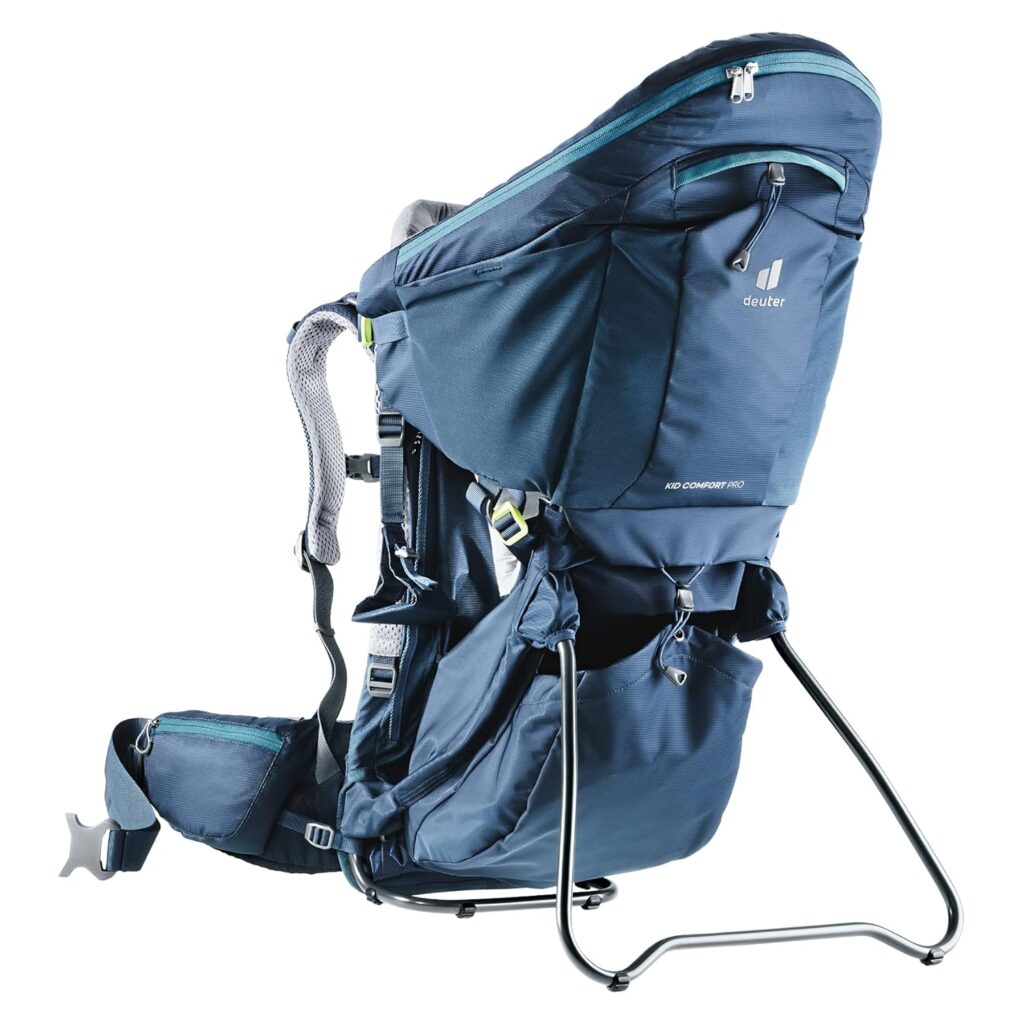
Table of Contents
- Understanding Back Pain and Baby Carriers
- 1.1 Why Back Pain Occurs with Baby Carriers
- 1.2 The Importance of Ergonomics in Babywearing
- Key Features of the Best Baby Carriers for Back Pain
- 2.1 Proper Weight Distribution
- 2.2 Adjustable Straps and Waist Belts
- 2.3 Lumbar Support
- 2.4 Breathable and Comfortable Materials
- 2.5 Versatile Carrying Positions
- Types of Baby Carriers: Which One Is Best for Back Pain?
- 3.1 Soft Structured Carriers (SSCs)
- 3.2 Wrap Carriers
- 3.3 Ring Slings
- 3.4 Mei Tais
- 3.5 Backpack Carriers
- How to Wear a Baby Carrier to Prevent Back Pain
- 4.1 Correct Posture While Wearing a Baby Carrier
- 4.2 How to Adjust a Baby Carrier for Maximum Support
- 4.3 Common Mistakes to Avoid
- Top 5 Best Baby Carriers for Back Pain: Reviews and Recommendations
- 5.1 Ergobaby Omni 360
- 5.2 LÍLLÉbaby Complete All Seasons
- 5.3 Baby Tula Explore
- 5.4 Boba Wrap
- 5.5 Deuter Kid Comfort Pro Backpack Carrier
- Expert Tips for Managing Back Pain While Babywearing
- 6.1 Stretching and Exercises to Relieve Strain
- 6.2 When to Switch Carriers
- 6.3 Consulting a Healthcare Professional
- Final Thoughts: Finding the Best Baby Carrier for Back Pain
1. Understanding Back Pain and Baby Carriers
1.1 Why Back Pain Occurs with Baby Carriers
Back pain is a common complaint among parents who frequently carry their babies, especially in the early months when babies need constant attention and soothing. There are a few reasons why this happens:
- Poor Weight Distribution: If the baby carrier does not distribute the baby’s weight evenly across your back, shoulders, and hips, it can lead to strain on your muscles and spine.
- Incorrect Posture: Many parents unknowingly adopt poor posture while wearing a baby carrier, such as leaning forward or slumping, which can cause tension in the lower back.
- Insufficient Support: Carriers that lack proper lumbar support or do not offer adjustable features can exacerbate back pain, especially if you already suffer from pre-existing conditions.
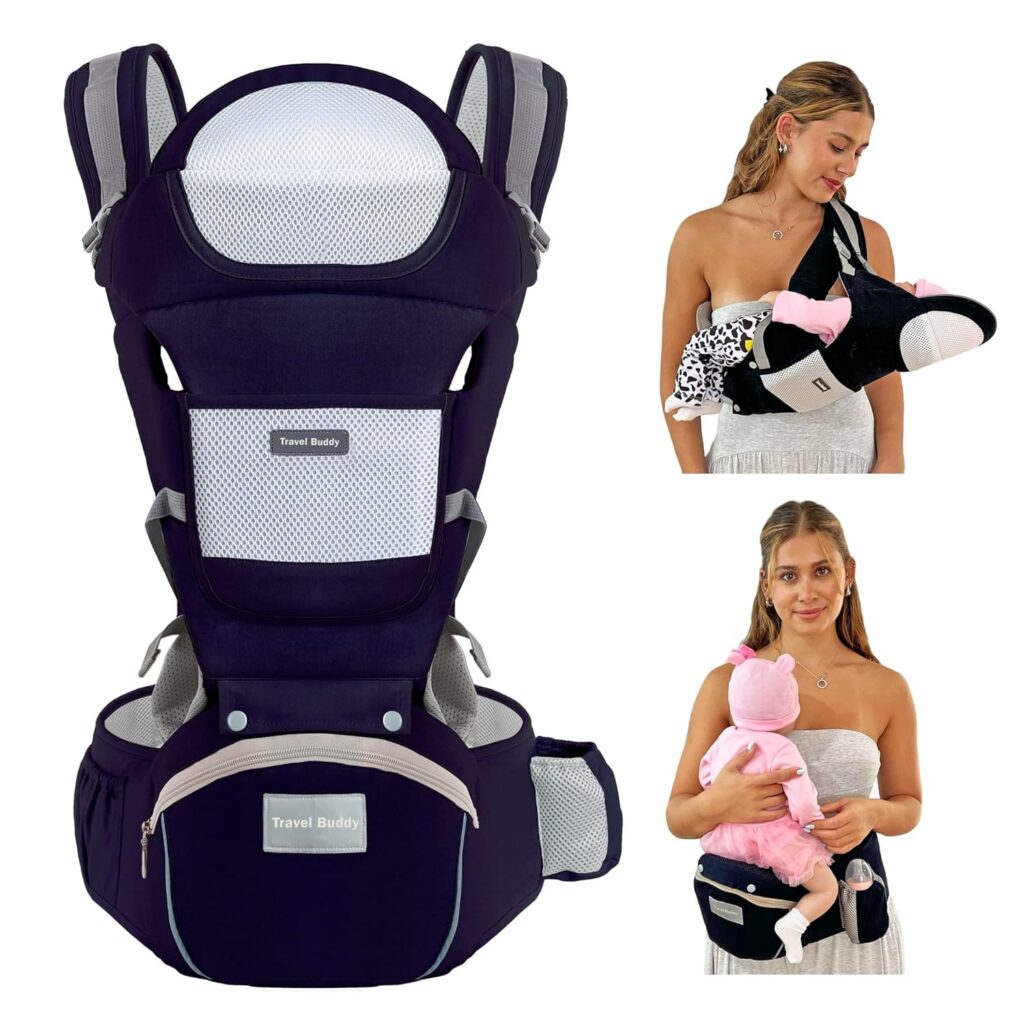
1.2 The Importance of Ergonomics in Babywearing
Ergonomics is the science of designing products that fit the human body, making tasks easier and more comfortable. In babywearing, this means ensuring that the carrier evenly distributes weight and supports the natural curve of your spine while keeping your baby in a safe and comfortable position. A well-designed ergonomic baby carrier can reduce or eliminate back pain by:
- Aligning your spine correctly to prevent slouching.
- Distributing weight across the hips and shoulders rather than the lower back.
- Allowing for proper posture without overstraining muscles or joints.
2. Key Features of the Best Baby Carriers for Back Pain
When searching for the best baby carrier for back pain, it’s important to know which features to prioritize. These features are essential for preventing strain and providing support during babywearing.
2.1 Proper Weight Distribution
The most important feature of any baby carrier for back pain is its ability to distribute your baby’s weight evenly. Carriers that shift the load to your hips and shoulders—rather than concentrating it on your lower back—help reduce pressure and discomfort.
2.2 Adjustable Straps and Waist Belts
Having adjustable straps and a supportive waist belt ensures that the carrier fits your body correctly. Look for carriers with wide, padded straps that cross over your back for added support, and a waistband that sits snugly on your hips to help lift some of the baby’s weight off your shoulders.
2.3 Lumbar Support
Carriers with built-in lumbar support provide additional cushioning and reinforcement to the lower back, which is essential for parents who experience discomfort in this area. The lumbar support keeps your spine aligned and prevents slouching by offering firm support to your back.
2.4 Breathable and Comfortable Materials
Babywearing can get hot, especially if you’re carrying your baby for long periods. Look for carriers made from breathable, lightweight materials that prevent overheating and reduce the risk of sweat buildup, which can cause additional discomfort.
2.5 Versatile Carrying Positions
A versatile baby carrier allows for multiple carrying positions—front-facing, inward-facing, hip carry, and back carry. Being able to switch positions ensures that you can adjust to both your baby’s needs and your comfort, helping to alleviate strain on specific muscle groups.
3. Types of Baby Carriers: Which One Is Best for Back Pain?
There are several types of baby carriers available, each with its own advantages and disadvantages. Some are better suited for parents dealing with back pain than others. Below, we break down the most common types and evaluate their back support.
3.1 Soft Structured Carriers (SSCs)
Soft Structured Carriers (SSCs) are some of the most popular baby carriers due to their ergonomic design and ease of use. They feature padded shoulder straps and a waist belt, which helps distribute weight evenly. Many SSCs also come with built-in lumbar support, making them a top choice for parents with back pain.
- Best for: Parents looking for structured support and versatility in carrying positions.
- Example: Ergobaby Omni 360.
3.2 Wrap Carriers
Wrap carriers consist of long pieces of fabric that you wrap around your body to create a snug, custom fit for you and your baby. While they offer a high degree of versatility, they often lack the structured support of SSCs, which may not be ideal for parents with severe back pain.
- Best for: Newborns and parents looking for a soft, cuddly carrier.
- Example: Boba Wrap.
3.3 Ring Slings
Ring slings are one-shoulder carriers made of fabric that is threaded through rings to create a pouch for your baby. While convenient for quick trips, they don’t offer the even weight distribution needed for longer periods, which can lead to shoulder and back pain.
- Best for: Short-term wear and breastfeeding.
- Example: Maya Wrap Ring Sling.
3.4 Mei Tais
Mei Tais are a hybrid between a wrap and a structured carrier. They have a square body panel with straps that tie around your waist and shoulders, allowing for some customization in fit. However, they lack the padding and lumbar support of SSCs.
- Best for: Parents who want more structure than a wrap but more flexibility than a SSC.
- Example: Infantino Sash Wrap and Tie.
3.5 Backpack Carriers
Backpack carriers are designed for older babies and toddlers, especially for parents who like hiking or outdoor activities. These carriers have a strong frame and provide excellent weight distribution, making them ideal for long-term wear without straining your back.
- Best for: Hiking, outdoor activities, and toddlers.
- Example: Deuter Kid Comfort Pro.
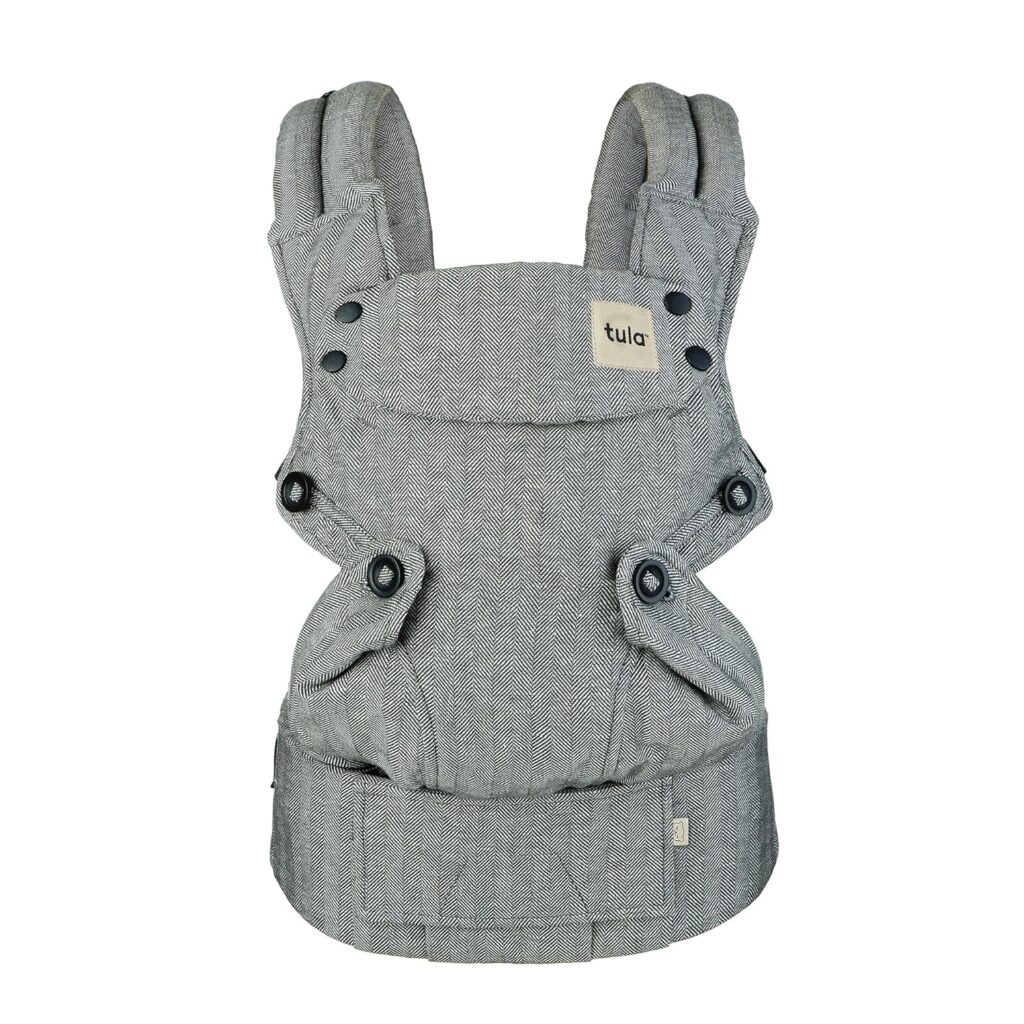
4. How to Wear a Baby Carrier to Prevent Back Pain
Even the best baby carrier for back pain won’t be effective if it’s not worn correctly. Here are some important tips on how to wear a baby carrier to maximize comfort and prevent back pain.
4.1 Correct Posture While Wearing a Baby Carrier
- Keep your back straight: Always stand up tall and engage your core muscles to help support your spine.
- Avoid leaning forward: When carrying your baby, resist the urge to lean forward. Instead, keep your shoulders back and your weight evenly distributed.
- Distribute the weight: Ensure that the carrier is sitting on your hips, not your lower back, to avoid pressure on your spine.
4.2 How to Adjust a Baby Carrier for Maximum Support
- Tighten the waist belt: The waist belt should be snug around your hips to take the weight off your shoulders.
- Adjust shoulder straps: The shoulder straps should be tight enough to hold the baby securely but not so tight that they cause discomfort or restrict your movement.
- Ensure the baby is at the right height: The baby should be close enough for you to kiss their head without bending your neck. This prevents strain from leaning forward.
4.3 Common Mistakes to Avoid
- Wearing the carrier too loose: A loose carrier can cause your baby to sag, which forces you to lean forward and strain your back.
- Ignoring discomfort: If you feel discomfort in your back or shoulders, adjust the carrier immediately. Don’t ignore early signs of strain.
5. Top 5 Best Baby Carriers for Back Pain: Reviews and Recommendations
Here are the top baby carriers that are specifically designed to help reduce and prevent back pain.
5.1 Ergobaby Omni 360
Key Features:
- Lumbar support panel for extra back support.
- Adjustable shoulder straps and waist belt.
- Can be used in multiple carrying positions (front, back, and hip).
The Ergobaby Omni 360 is a highly versatile carrier that offers excellent lumbar support, adjustable straps, and even weight distribution, making it one of the best choices for parents dealing with back pain.

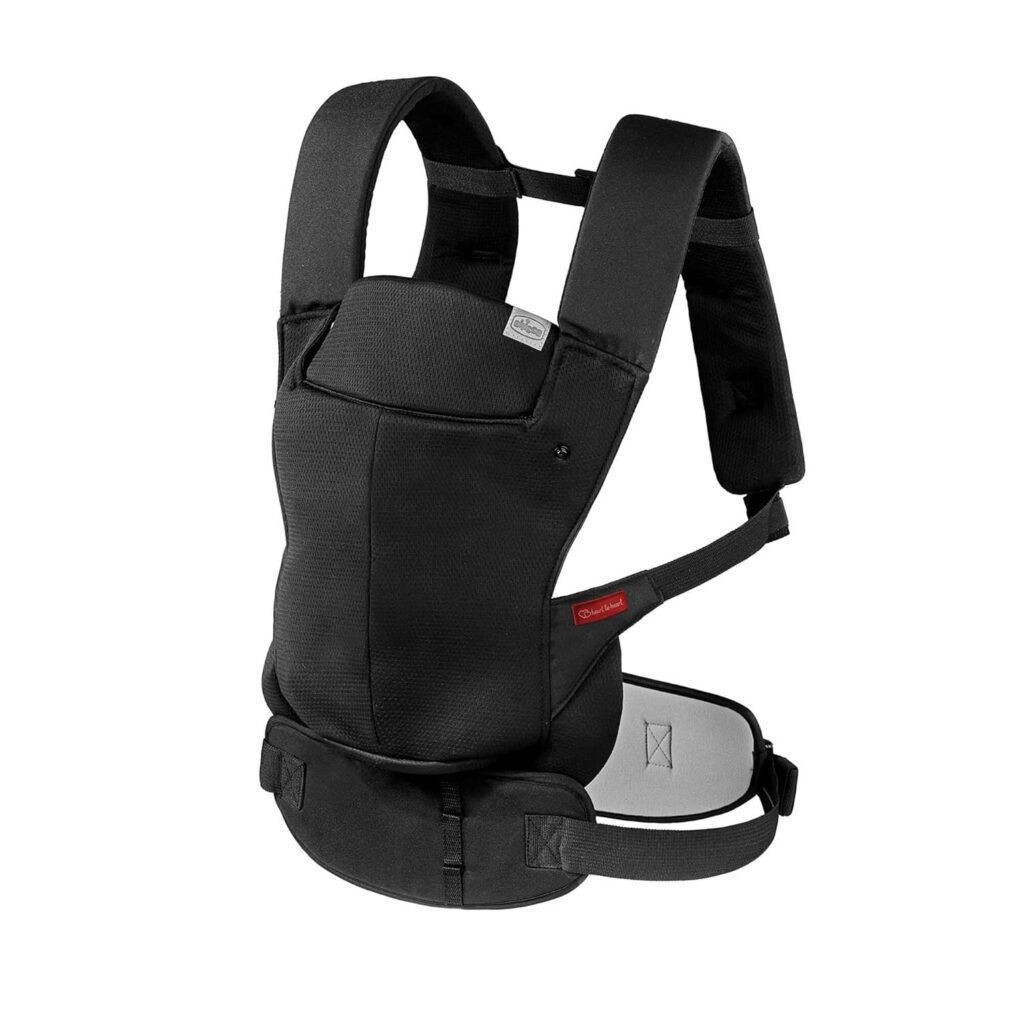


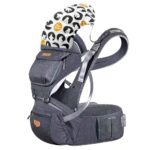
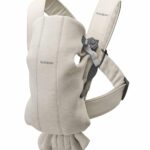
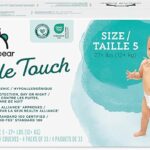

2 thoughts on “The Best Baby Carrier for Back Pain : A Comprehensive Guide for Comfort and Support”